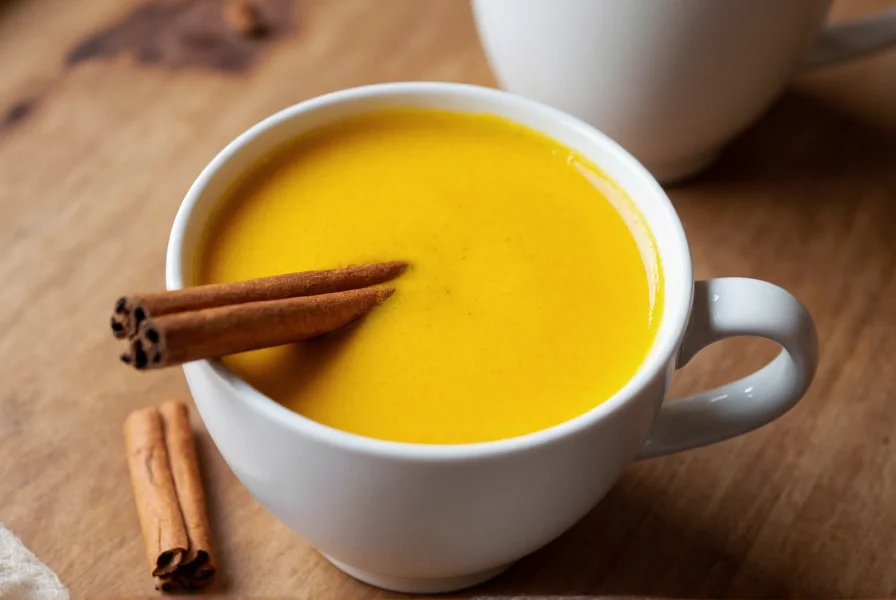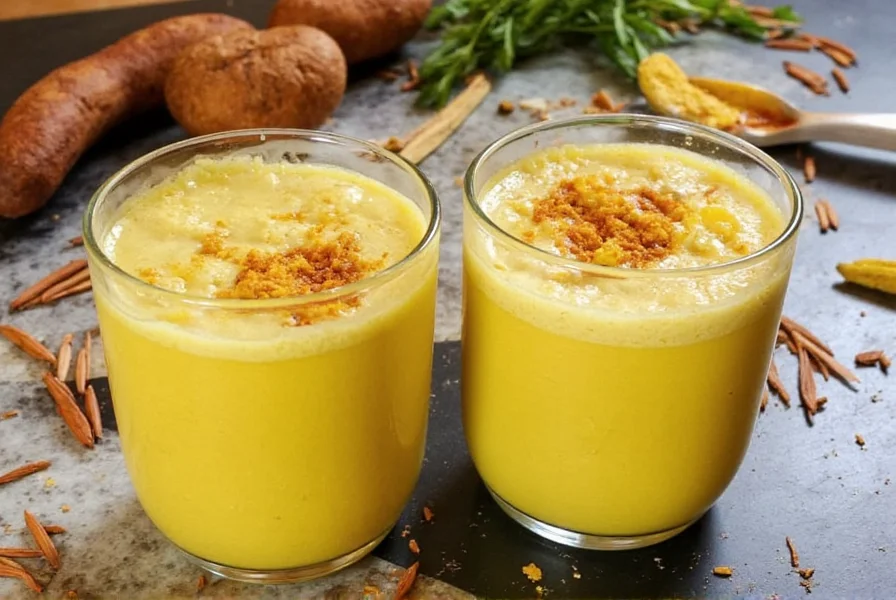Golden milk has journeyed from ancient Ayurvedic medicine to modern kitchen counters, becoming a staple wellness ritual for millions seeking natural ways to support their health. This vibrant yellow beverage harnesses the power of turmeric's active compound curcumin, which research suggests may help reduce inflammation and support overall wellness when properly prepared.
The Science Behind Turmeric's Benefits
Turmeric contains curcumin, a polyphenol with potent antioxidant and anti-inflammatory properties. Scientific studies indicate that curcumin may help reduce markers of inflammation in the body, though its effectiveness depends significantly on proper preparation. The key to unlocking turmeric's potential lies in three critical elements: fat, heat, and black pepper.
Curcumin is fat-soluble, meaning it requires healthy fats for optimal absorption. Heating turmeric in milk enhances its solubility, while piperine in black pepper can increase curcumin absorption by up to 2,000%. This explains why traditional recipes always include these three components working synergistically.
Essential Ingredients Explained
Creating an effective turmeric latte requires understanding each component's role:
| Ingredient | Function | Recommended Amount |
|---|---|---|
| Turmeric powder | Provides curcumin and color | 1 teaspoon per serving |
| Black pepper | Enhances curcumin absorption | 1/4 teaspoon per serving |
| Healthy fat | Facilitates curcumin absorption | 1/2 teaspoon coconut oil or ghee |
| Milk | Creates base and carries compounds | 1 cup per serving |
Classic Turmeric Latte Recipe
This foundational recipe creates a perfectly balanced golden milk with optimal absorption properties:
Ingredients
- 1 cup milk (dairy, almond, coconut, or oat)
- 1 teaspoon turmeric powder
- 1/4 teaspoon freshly ground black pepper
- 1/2 teaspoon coconut oil or ghee
- 1/4 teaspoon cinnamon
- Optional: 1 teaspoon honey or maple syrup
- Pinch of ginger powder (optional)
Preparation Method
- In a small saucepan, combine milk, turmeric, black pepper, and coconut oil
- Whisk thoroughly to prevent clumping
- Heat over medium-low temperature (do not boil)
- Simmer for 5-7 minutes while stirring constantly
- Add sweetener and cinnamon during the last minute of heating
- Strain through a fine mesh sieve for smoothest texture
- Pour into mug and enjoy warm

Popular Variations for Different Needs
Adapt this versatile recipe to suit various dietary preferences and health goals:
Vegan Golden Milk
Replace dairy milk with full-fat coconut milk and use maple syrup instead of honey. Add 1/4 teaspoon cardamom for enhanced flavor complexity. This vegan turmeric latte variation maintains all the absorption benefits while remaining completely plant-based.
Iced Turmeric Latte
Prepare the base mixture as directed, then chill completely. Pour over ice and add a splash of cold milk. This refreshing anti-inflammatory turmeric drink works well for warmer months while preserving the health benefits.
Protein-Boosted Version
Add one scoop of unflavored collagen peptides or plant-based protein powder after heating. Blend thoroughly for a satisfying morning beverage that supports both wellness and muscle maintenance.
Avoiding Common Preparation Mistakes
Many homemade turmeric latte recipes fail due to preventable errors. Avoid these pitfalls:
- Skipping the black pepper - Without piperine, your body absorbs minimal curcumin
- Using insufficient fat - Curcumin needs fat for proper absorption
- Boiling the mixture - High heat degrades beneficial compounds
- Using low-quality turmeric - Choose organic, fresh turmeric powder for maximum potency
- Serving immediately without simmering - Heat activation enhances bioavailability
Optimal Timing and Consumption Guidelines
While you can enjoy a turmeric latte any time of day, timing affects its benefits. Many wellness experts recommend drinking golden milk in the evening due to turmeric's potential calming effects. The warm beverage can support relaxation before bedtime, though individual responses vary.
For maximum benefit, consume your turmeric latte consistently rather than occasionally. Regular daily consumption allows curcumin to build up in your system. One serving per day provides sufficient curcumin without risking potential side effects from excessive intake.

Serving Suggestions and Storage Tips
Elevate your turmeric latte experience with these professional tips:
- Garnish with a light dusting of turmeric or cinnamon for visual appeal
- Add a small piece of star anise during heating for complex flavor notes
- Use a milk frother for a cafe-quality texture
- Store base mixture (without sweetener) in a glass jar for up to 5 days
- Freeze portions in ice cube trays for quick single-serving preparation
When storing golden milk, remember that separation is natural. Simply shake or stir before reheating gently. Avoid microwaving at high temperatures, which can degrade the beneficial compounds.
Frequently Asked Questions
How often should I drink turmeric latte for health benefits?
For optimal benefits, consume one turmeric latte daily. Regular consistent consumption allows curcumin to build up in your system. While occasional consumption provides some benefits, daily intake delivers more significant results. Avoid exceeding two servings per day to prevent potential digestive discomfort from excessive turmeric.
Can I make turmeric latte without black pepper?
While you can make turmeric latte without black pepper, doing so significantly reduces curcumin absorption. Piperine in black pepper enhances absorption by up to 2,000%. If you dislike black pepper's flavor, use just 1/8 teaspoon or try long pepper as an alternative. The small amount needed won't overpower the drink but makes a substantial difference in effectiveness.
What's the best milk for turmeric latte absorption?
Full-fat coconut milk provides optimal absorption due to its high fat content, which helps dissolve curcumin. Whole dairy milk works well for those who consume dairy. For plant-based options, choose fortified oat or almond milk with added fats. The key factor is the fat content - aim for milks with at least 3-5 grams of fat per serving to maximize curcumin bioavailability.
How long do I need to simmer turmeric latte?
Simmer your turmeric latte for 5-7 minutes over medium-low heat. This duration allows the curcumin to properly dissolve in the fat while activating its beneficial properties. Avoid boiling, which can degrade compounds. The mixture should be hot but not bubbling vigorously. Proper simmering time significantly increases the drink's effectiveness compared to simply mixing ingredients in cold milk.
Can turmeric latte help with inflammation?
Research suggests that regularly consuming properly prepared turmeric latte may help reduce inflammation markers in the body. Curcumin, turmeric's active compound, has demonstrated anti-inflammatory effects in scientific studies. However, effectiveness depends on proper preparation with black pepper and healthy fats for absorption. While not a medical treatment, this golden milk recipe can be a valuable component of an anti-inflammatory lifestyle when consumed consistently.











 浙公网安备
33010002000092号
浙公网安备
33010002000092号 浙B2-20120091-4
浙B2-20120091-4